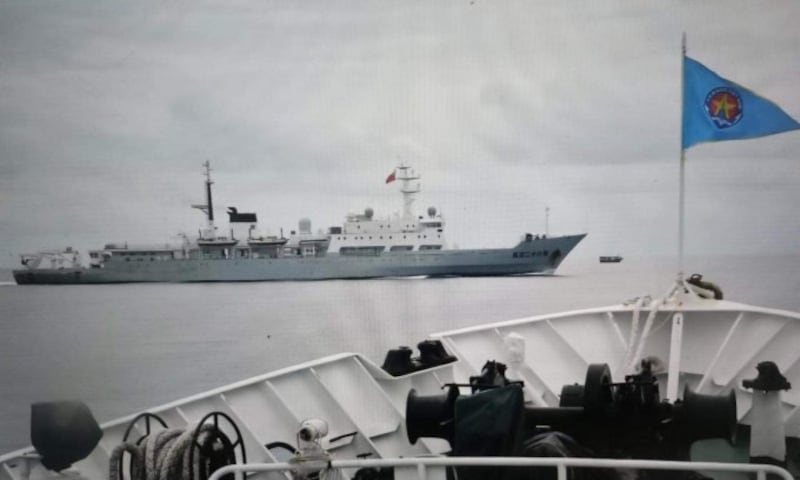Vietnam’s new President To Lam has asked that Beijing respect Hanoi’s rights and interests in disputed waters, days after Vietnamese officials protested against what they called “China’s illegal activities” in the Gulf of Tonkin.
Last Thursday, a Vietnamese foreign ministry spokesperson denounced the operation of the Chinese navy survey vessel Hai Yang 26 in Vietnam’s exclusive economic zone and continental shelf and said that Vietnam “has engaged in multiple diplomatic exchanges” with China to demand the ending of such operations.
To Lam, while not mentioning the Hai Yang 26, told Chinese ambassador to Vietnam Xiong Bo that the two neighbors should strictly implement bilateral agreements, better control and resolve disagreements at sea, as well as respect each other's legitimate rights and interests, his office said in a statement.
The two countries should also actively seek appropriate ways to settle maritime disputes in accordance with international law, especially the U.N. Convention on the law of the sea (UNCLOS), he said.
The new president stressed that Vietnam saw its relationship with China as a “strategic choice and top priority” of its foreign policy.
Lam was sworn in as Vietnam’s state president on May 22 amid an unprecedented reshuffle of the communist party’s leadership following the “burning furnace” anti-graft campaign initiated by party chief Nguyen Phu Trong.
Xiong Bo became the first foreign ambassador to pay Lam a courtesy call to congratulate him on his new post.
Hai Yang 26
In last week’s unusually strong rebuke, foreign ministry spokeswoman Pham Thu Hang said that Vietnam was “deeply concerned,” resolutely opposed, and demanded that China immediately stop the “illegal survey activities” of the Hai Yang 26 in Vietnam’s waters and not repeat them.
Hang told reporters in Hanoi that the Vietnamese government “has engaged in multiple diplomatic exchanges” with the Chinese side over the case.
Chinese survey vessels have frequently operated in Vietnam’s exclusive economic zone but it has seldom publicly protested, giving preference to quieter bilateral channels.

A Vietnamese analyst, who declined to be identified because of the sensitivity of the issue, said that the new leader – who was seen as a hard-liner because of his public security background -- may want to show that he is not pro-China, as some critics say.
Another analyst, Hoang Viet, told RFA that the foreign ministry’s reaction was due to the severity of the event, as well as to partially direct attention to Vietnam amid increased tensions between China and the Philippines in the South China Sea.
Hai Yang 26 is one of nine Type 636A hydrographic survey vessels in service with the Chinese People’s Liberation Army navy.
This kind of survey ship is thought to be utilized by the navy for mapping the underwater topography map in areas where submarines operate, as well as to conduct marine surveys, such as the study of ocean acoustics.
The fact that Vietnam had “multiple diplomatic exchanges” with China over the vessel suggested it had been operating in Vietnam’s waters for a prolonged period.
China has yet to respond to Vietnam's protest but a Chinese think tank, the South China Sea Probing Initiative, wrote on the social media platform X that the Hai Yang 26 only conducted a freedom of navigation operation, a type of patrol that China itself has deemed provocative on numerous occasions when conducted by other navies.
Edited by Taejun Kang.
